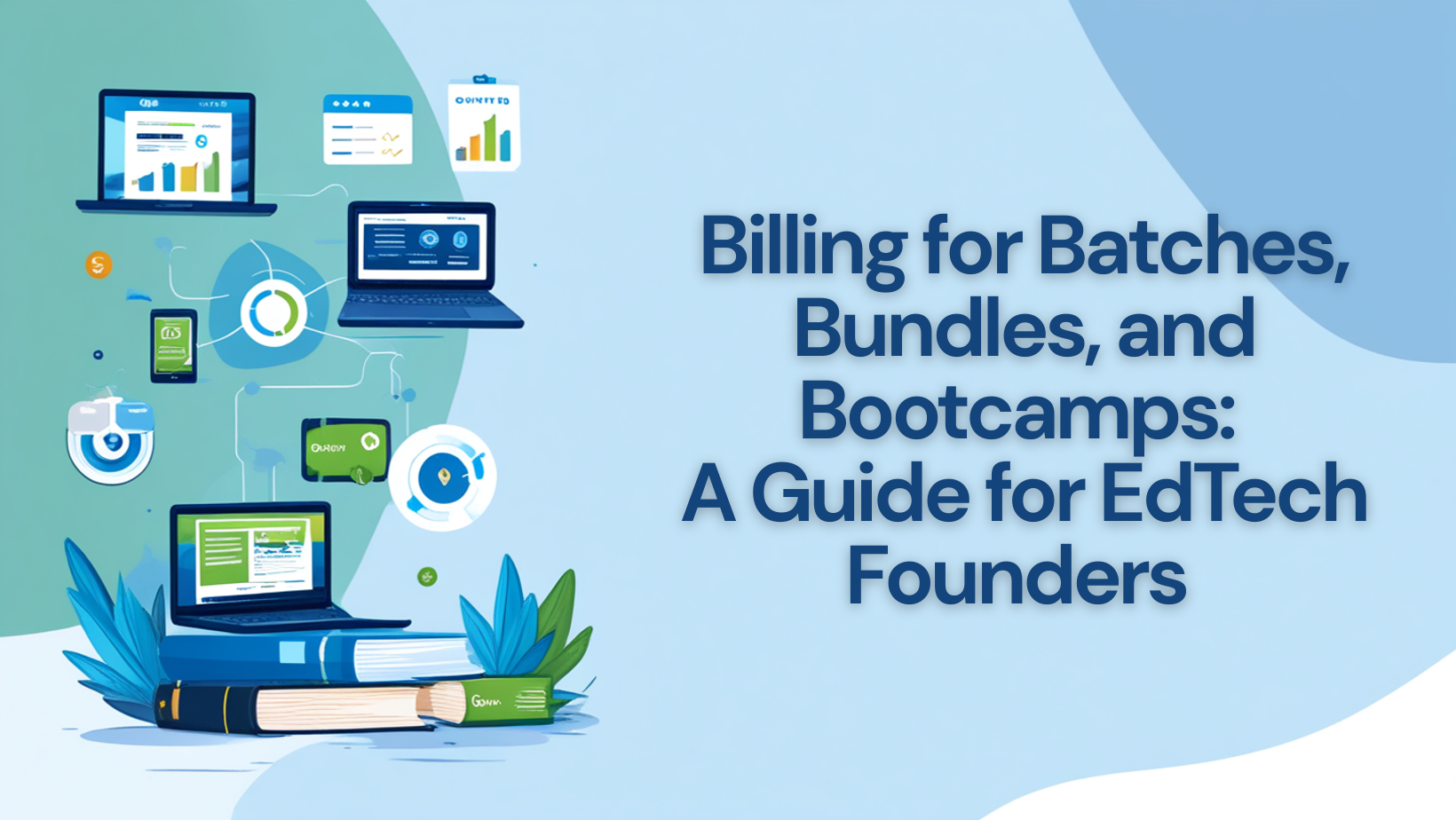
Introduction
Running a successful EdTech platform takes more than great content—it takes smooth operations behind the scenes too. One of the biggest operational headaches? Billing. Whether you're offering batches, bundles, or bootcamps, managing payments can quickly become messy.
Missed invoices, delayed payments, and confused learners or parents are common challenges many EdTech founders face. And when billing isn’t seamless, it doesn’t just cause admin stress—it can directly impact user satisfaction and retention.
So how do you streamline billing without making your system rigid or overly complex?
In this guide, we’ll walk you through billing strategies that are simple, effective, and tailored to how EdTech actually works. From choosing the right tools to structuring your payment flows, you’ll learn how to create a billing experience that supports growth—and keeps students coming back.
Let’s get started.
Understanding Billing for Batches
In the bustling world of EdTech, finding the right billing methods is key to streamlined operations and satisfied students. Batch billing is a powerful option that, when executed correctly, offers numerous advantages for both educators and learners. Let's simplify what it's all about!
Definition and Importance of Batch Billing
Batch billing means handling student invoices in groups. Whether you're dealing with a new cohort of coding newbies or a fresh set of future scientists, batch billing allows you to invoice an entire group simultaneously. Think of it as hitting "send all" for your billing invoices! This approach saves you heaps of time compared to processing bills individually.
Batch billing shines when you enroll students in pre-scheduled courses or term-based classes where everyone starts and ends at the same time. This method standardizes payment schedules, making your accounting smoother and more predictable. It's a win-win: your students can focus more on learning and less on their wallets, while you gain clarity and consistency in your revenue stream.
Key Considerations for Implementing Batch Billing
While batch billing sounds like a dream, it's important to cover your bases before diving in:
Implementing these considerations helps prevent hiccups and ensures a seamless process that keeps everyone informed and on track.
Challenges and Solutions in Batch Billing
No system is without its challenges, and batch billing is no exception. Here are a few bumps you might encounter, along with some handy solutions:
By facing these challenges head-on, you can ensure your batch billing system works effectively, keeping both your balance sheet and your students happy.
Navigating Bundle Billing
EdTech providers have a nifty trick up their sleeve with bundle billing. Offering a set of courses or resources together at an enticing price can be a smart strategy to attract more learners and increase revenue. Let's unfold the magic of bundles!
Types of Bundles in EdTech
Bundles come in all shapes and sizes, giving you flexibility in how you attract and retain students. Here are a few popular types you might consider:
Exploring these bundle options allows you to be creative and meet various student interests and learning goals.
Pricing Strategies for Bundles
Pricing bundles requires a bit of strategy and pizzazz! You want to provide value while also ensuring you’re not undervaluing your offerings. Here are some strategies:
Harnessing these pricing strategies can boost your attractiveness and help you compete powerfully in the market.
How to Leverage Bundles to Enhance Revenue
When it comes to using bundles to bolster your revenue, it’s not just about slapping courses together and calling it a day. Here’s how you can thoughtfully leverage bundles:
Each of these strategies can help maximize the impact of your bundles, turning interested individuals into dedicated learners and boosting your business's bottom line.
Mastering Bootcamp Billing
When it comes to the world of EdTech, bootcamps have carved out a significant niche. These intensive, career-focused programs are designed to ramp up skills quickly, often in areas like coding, data science, or digital marketing. As an EdTech founder, mastering the art of bootcamp billing is integral to providing value and maintaining student satisfaction. Let's dive into the unique aspects of bootcamp billing and how you can create a seamless experience for your students.
Unique Characteristics of Bootcamps
Bootcamps are fast-paced and immersive, generally spanning weeks or a few months. Because of their rapid nature and specialized curriculum, bootcamps come with distinct billing challenges:
Understanding these characteristics enables you to tailor your billing process to the specific demands of bootcamp students, ensuring transparency and reliability.
Flexible Payment Options for Bootcamps
Given their steep costs, offering flexible payment options for bootcamps is vital. Here are a few strategies you might consider:
These flexible options can broaden your potential student pool and provide peace of mind, enhancing both enrollment numbers and student satisfaction.
Enhancing Student Experience through Bootcamp Billing
Billing isn’t just a transactional aspect of your bootcamp; it's an opportunity to enhance the overall student experience. Here’s how:
By focusing on these aspects, you not only simplify the billing process but also demonstrate a commitment to your students' educational journey. Crafting an effective bootcamp billing strategy is more than just processing payments—it's a crucial touchpoint that influences the perception and success of your EdTech venture.
Conclusion
Navigating the complex world of billing might seem daunting at first, but with the right strategy and tools, EdTech founders can effectively manage transactions for batches, bundles, and bootcamps. Remember these key takeaways:
Know your audience: Understand their preferences when offering pricing models for your courses.
Embrace flexibility: Utilize scalable and flexible billing systems to streamline operations for diverse offerings.
Stay current: Regularly review and update your billing practices to meet evolving industry standards and student needs.
By implementing these strategies, you can focus more on delivering exceptional educational experiences and less on administrative headaches. Happy billing, and here's to your EdTech venture's success!
Ready to simplify and scale your EdTech billing?
Try MYFUNDBOX — a flexible, secure, and global subscription billing platform built to support your growth.
.png)
.png)















